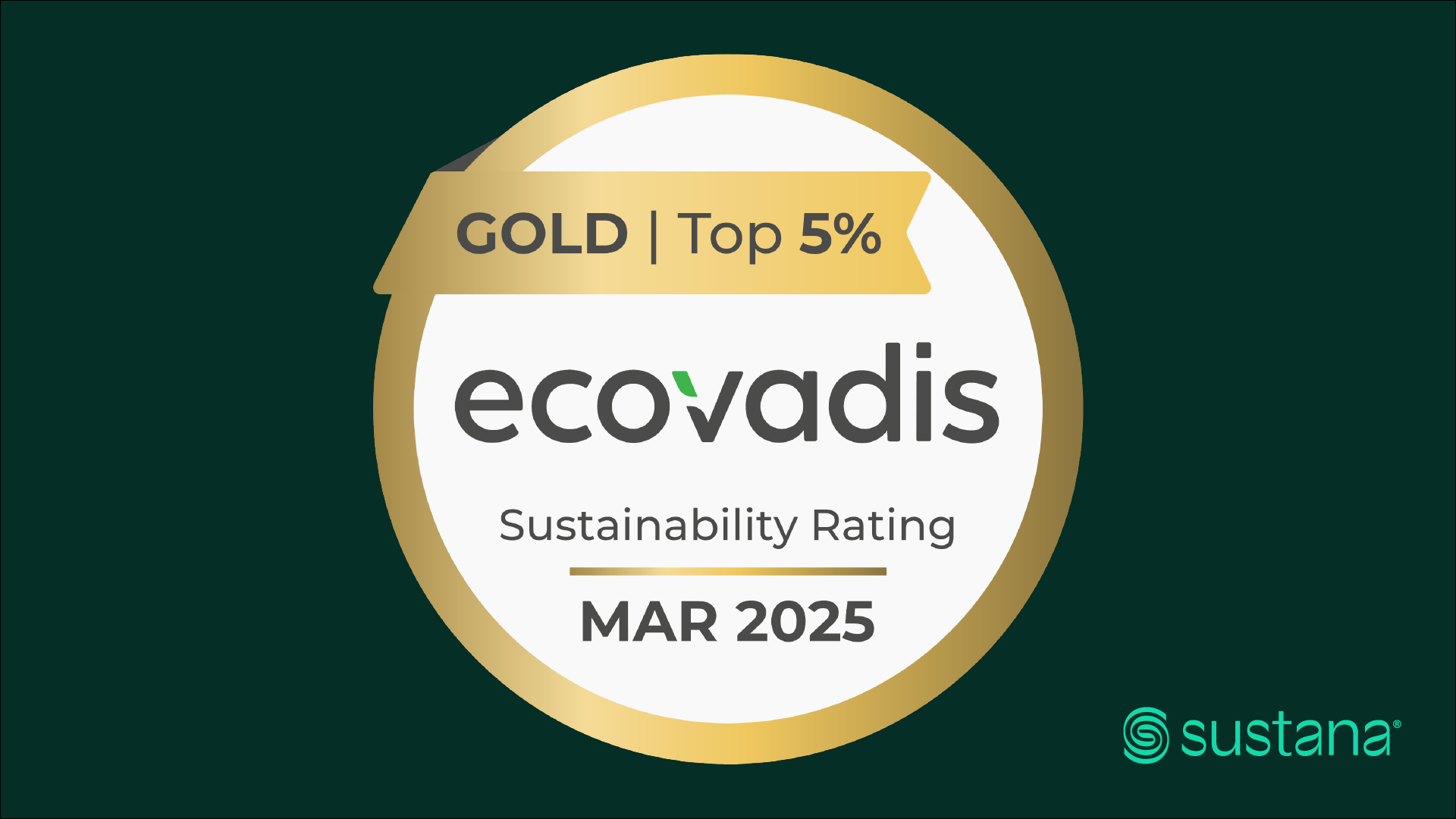For the 16th of our “Conversations with Green Champions,” Rolland President Philip Rundle speaks with Labelcraft about its Recyclable Enviroliner – the first label release liner that is both 100 per cent recyclable and made of 100 per cent post-consumer recycled paper.
Brian Tomlinson, President, and Brandon Gomes, Sales and Marketing Manager, talk about their innovative alternative to generally unrecyclable release liners (also known as label backing or backing paper).
Labelcraft is a longstanding innovator in custom printed labels
- One-stop printing plants near Toronto, Ontario (Pickering) and Dallas, Texas (DeSoto).
- Recyclable Enviroliner is made in Toronto and Dallas will also make it in late 2020.
- Recyclable Enviroliner is an eco-breakthrough for the label industry as North America landfills 1.2 million tons – 30,000 trailer loads – of label release liners every year.
What’s the difference between Recyclable Enviroliner and traditional products?
Traditional label release liner is made of virgin paper treated with a heavy coating of silicone. It allows the label (printed on face stock) to release from the liner. But release liner with a heavy coating of silicone cannot be processed at most recycling facilities, so it generally goes to landfill. Virgin paper is used because it provides a super smooth surface that stops the heavy layer of silicone from sinking into the sheet.
With Recyclable Enviroliner we use a proprietary process that allows us to use uncoated 100 per cent post-consumer recycled paper as the release liner. It can be recycled at standard facilities.
So, by innovating on two levels, you have created two environmental benefits?
Yes. We are diverting release liners from landfill, and using recycled post-consumer paper from Rolland that has much lower environmental impacts than virgin paper.
What led Labelcraft to close the loop, and develop a recycled and recyclable release liner?
It started with requests from two customers who were looking for sustainable solutions. Our first idea was shipping used release liners to specialized recycling facilities that can process silicone-treated paper. But after calculating the environmental impacts – like carbon emissions –of shipping and storage that approach had a zero to negative footprint! That pointed us toward a recyclable solution.
What was the lightbulb moment?
The manufacturing process for sticky notes, where we also use uncoated recycled paper from Rolland, led us to think about adapting that technology to make a recyclable release liner with recycled paper. The adhesive on sticky notes peels away from the sheet beneath – which serves much like a release liner.
Was there an extended R&D process?
We had workable products after two or three years. But it took five years to launch a fully marketable product, with a full spectrum of adhesives and face stocks, usable for virtually all types of labels.
The main challenge was doing something no one had ever considered – using uncoated recycled paper rather than virgin. We also had to be competitive with traditional liners, in terms of release properties and press performance.
How have customers responded?
Great response for a very good reason. Many companies are trying to be 100 per cent zero waste to landfill, and haven’t been able to get there, because the last two or three per cent consists of traditional release liner which has limited recycling options. We offer the only sustainable option.
Also, customers can use their current production equipment with Recyclable Enviroliner, so it is easy to switch from their old release liner. This is unlike some environmental solutions, where end users must invest in new equipment or machinery.
What led you to use Rolland for Recyclable Enviroliner?
Rolland performed well with sticky notes and has great environmental properties so we naturally turned to them as a partner for this product.
We use 100 per cent post-consumer Rolland Enviro Print and Rolland Enviro Copy to produce the stock (face stock and liner together), then print the finished labels on the stock using either flexographic or digital presses depending on the job.
Rolland’s Eco Calculator makes it very easy for customers to establish the environmental benefits of using Recyclable Enviroliner. It calculates the trees saved and water saved and so on, per ton of paper, and they can apply those numbers toward their sustainability targets.
How does Rolland paper measure up, in terms of ease of use and quality?
We have zero issues with Rolland. It’s important to remember we are using the paper for an application Rolland never considered – as backing. We are not really printing on it, except for the occasional timing mark, but do need very specific performance characteristics. For example, with laser applications, where stay flat properties are critical, Rolland is excellent.
What makes Labelcraft an innovator?
We’re a small to mid-sized business and have to be innovative, relying on technology and know-how to stay competitive. Other innovations include a waterless temporary tattoo sold worldwide. Even with sticky notes we coat and print paper in one step rather than using multiple presses. And Recyclable Enviroliner makes up for the innovations that didn’t pan out over the years!
Do you see Labelcraft as a green champion?
We have never strived to be a green champion. It has happened indirectly with Recyclable Enviroliner, which solves a huge landfill problem with traditional release liners. It also helps us be greener because we can recycle all of our manufacturing waste from this product. All these environmental benefits are a really a by-product of being more competitive.


